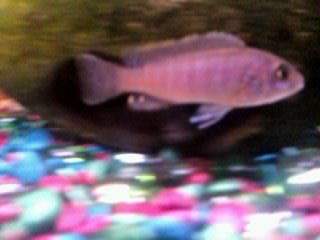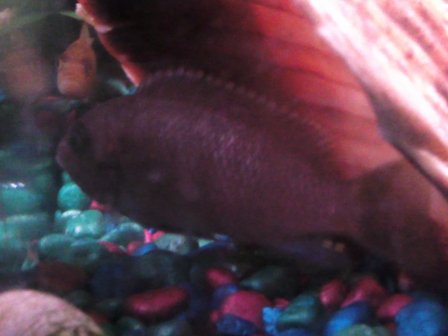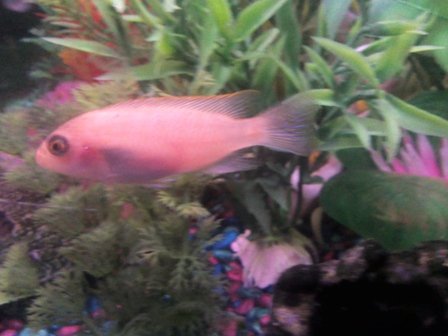Eggspots are a poor gender indicator. I have a female red zebra that had a half-dozen eggspots on her anal fin (she's mouthbrooded fry before so her gender is certain).
Aggression is a characteristic mbuna trait (the degree of that aggression is subject to a myriad of variables), regardless of gender; additionally mbuna's are also social-aggressive and will form a 'pecking order' among them. So if by 'acting masculine' means the fish is somewhat dominating is also not a gender indicator.
In my personal experience, fin shape and the proportionate size of the pelvic fins is a great indicator among fully matured zebra's (specimens over 4" in size and more than 4 years old, not juvies or sub-adults). Females tend to have rounded dorsal and anal fin tips and proportionately smaller pelvic fin length than that of the males (their fin tips are typically tapered and their pelvic fins are proportionately larger). As an example, I've never seen a fully matured male zebra with fins identical to the fins of the fish in photo #1.
With that said, fin shape and size is an indicator;. For gender confirmation you'll either have to vent these fish when they surpass 3"-3.5" in length or wait until one (or more of these) fish are mouthbrooding (mouthbrooding of fry is also gender confirmation among mbuna's).
In regards to coloration, all standard Colbalt Blue Zebras (metriaclima callainos) are some shade of blue (there are some variants which may be mottled or OB or close to white, etc. No red or orange females with this species.
Excluding OB morphs, most Red zebra's (metriaclima estherae) in the wild are in the following gender-colors: blue males and orange females. These blue m. estherae are superficially similar (but not identical) to m. callainos.
In captivity it is a different story since red (orange) morph males are widespread (depending on what region you live in), so orange males and orange females are quite prevalent.



